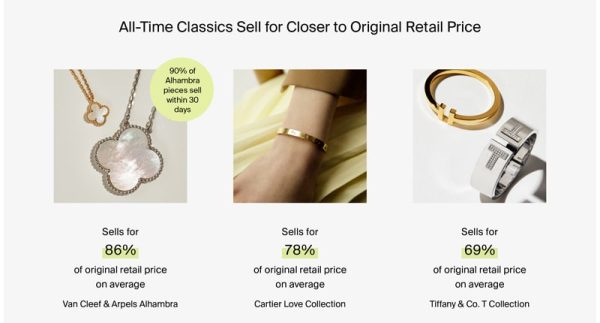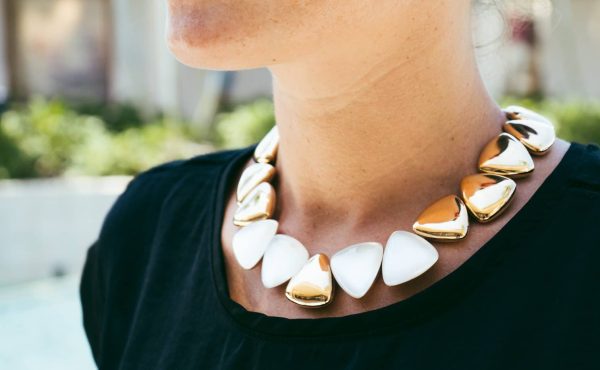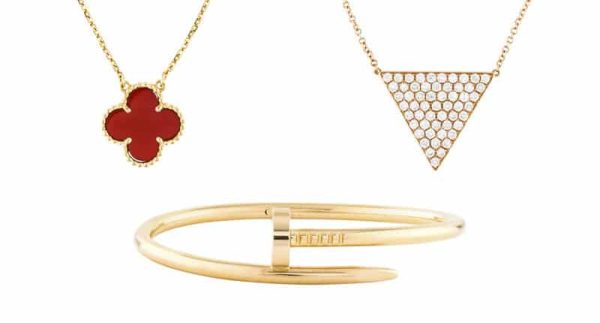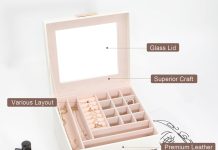Oh, the eternal question of value when it comes to jewelry. As I sit here, contemplating the gleam and sparkle of precious gemstones, I can’t help but wonder – what truly holds the best value? Is it the timeless elegance of a diamond necklace? Or perhaps the vibrant allure of a ruby ring? Join me as we embark on a journey to discover which jewelry pieces stand the test of time and hold the greatest worth.
This image is property of blog.worthy.com.
Review contents
Factors Affecting Jewelry Value
When it comes to determining the value of jewelry, several factors come into play. These factors can greatly impact the price and desirability of a piece. As a jewelry enthusiast, I have learned that understanding these factors is crucial for anyone looking to buy or sell jewelry. Let’s dive into the key elements that affect the value of jewelry:
Material Composition
The composition of the materials used in jewelry is one of the most important factors influencing its value. Precious metals such as gold, silver, and platinum are highly sought after for their intrinsic value. The purity of these metals, measured in karats, plays a significant role in determining their worth. Higher karat gold, for example, commands a higher price due to its increased purity.
Craftsmanship and Design
Another crucial factor in jewelry value is the craftsmanship and design of the piece. A well-crafted and intricately designed piece of jewelry will always have a higher value compared to a mass-produced or poorly made item. Skilled artisans who dedicate their expertise and time to create unique and detailed jewelry can significantly enhance its desirability and, ultimately, its price.
Brand and Reputation
The brand and reputation of a jewelry manufacturer also contribute to the overall value of a piece. Renowned jewelry brands like Tiffany & Co., Cartier, and Harry Winston have established themselves as icons of luxury and prestige. Jewelry from these esteemed brands often carries a higher price tag due to their established reputation and exceptional quality. The brand name itself becomes a symbol of authenticity and sophisticated craftsmanship.
Age and Rarity
The age and rarity of a piece of jewelry can have a significant impact on its value. Antique and vintage jewelry, for example, often holds a special allure due to its historical significance and uniqueness. Pieces that have survived through the ages and possess a distinctive style associated with a particular era can be considered invaluable treasures. Rarity also plays a role; if a gemstone or a design is hard to find or no longer in production, its scarcity can drive up its value.
Precious Metals
Precious metals are widely valued for their beauty, durability, and desirability in the realm of jewelry. Let’s take a closer look at three of the most commonly used precious metals:
Gold
Gold is considered the epitome of luxury and has been treasured throughout history. Its rich, warm color adds an elegant touch to any piece of jewelry. Gold is often used in various karat compositions, with 24 karat gold being the purest form. However, pure gold is too soft for everyday wear, so it is often alloyed with other metals such as copper or silver to increase its durability.
Silver
Silver is a versatile and lustrous metal that has been used in jewelry making for centuries. Its affordable price point makes it accessible to a wide range of consumers. Sterling silver, which contains 92.5% pure silver, is the most common type of silver utilized in jewelry. Its timeless appeal and ability to complement a variety of gemstones make it a popular choice among jewelry enthusiasts.
Platinum
Platinum is a rare and precious metal that exudes an aura of sophistication and exclusivity. Its natural white color, superior strength, and resistance to tarnish make it a preferred metal for high-quality jewelry. Platinum’s exceptional durability ensures that pieces made from this metal can withstand the test of time, making them heirloom-worthy treasures.
Gemstones
Gemstones are the dazzling stars that elevate the allure of jewelry. Here are four of the most coveted and valuable gemstones in the world:
Diamonds
Diamonds are renowned for their brilliance, durability, and timeless beauty. They are the hardest natural substance, making them highly resistant to scratches and damage. Diamonds are graded based on the four Cs: carat weight, color, clarity, and cut. These factors determine the value and desirability of a diamond, with larger carat weights, colorless stones, high clarity, and excellent cuts commanding higher prices.
Emeralds
Emeralds are prized for their lush green hues and exquisite transparency. These magnificent gemstones have captivated individuals for centuries, and their vivid color makes them stand out in any piece of jewelry. The value of an emerald is determined by its color, clarity, size, and overall appearance. Deep green emeralds with minimal inclusions and remarkable brilliance are the most desirable and valuable.
Rubies
Rubies are the fiery red gemstones that symbolize passion and vitality. Known for their vibrant red color, rubies are one of the most valuable gemstones on the market. The intensity of the red hue, combined with factors such as clarity, cut, and carat weight, determines the value of a ruby. The finest rubies possess a deep, rich red color with excellent clarity and minimal imperfections.
Sapphires
Sapphires, often associated with the color blue, come in a wide range of hues, including pink, yellow, and green. These gemstones are cherished for their durability and exceptional brilliance. The quality of a sapphire is assessed through factors such as color, clarity, and size. Intensely colored sapphires with high transparency and minimal inclusions are the most valuable.
Pearls
Pearls are organic gemstones formed within mollusks and treasured for their delicate beauty. Let’s explore the two main types of pearls:
Natural Pearls
Natural pearls are the rarest and most valuable type of pearls. These pearls are formed without human intervention, making each one unique and precious. The process of natural pearl formation occurs when an irritant enters the mollusk and triggers the secretion of nacre. The size, shape, color, and luster of natural pearls determine their value, with larger, rounder pearls exhibiting a greater worth.
Cultured Pearls
Cultured pearls are created by introducing an irritant into the mollusk and allowing it to develop into a pearl with human assistance. While cultured pearls are more readily available compared to natural pearls, their value is still determined by various factors. The quality of a cultured pearl is evaluated based on its luster, surface quality, shape, and color.
This image is property of nationaljeweler.com.
Vintage and Antique Jewelry
Vintage and antique jewelry possess a unique allure that attracts collectors and enthusiasts alike. Let’s explore what makes these pieces so valuable:
Historical Significance
Vintage and antique jewelry often carries historical significance, serving as a tangible link to the past. Pieces from certain eras, such as Art Deco or Victorian, reflect the cultural and artistic trends of their time. The historical context and craftsmanship of these jewelry pieces make them highly desirable to those seeking a connection to the past.
Intricate Artistry
Vintage and antique jewelry often showcase intricate artistry and exquisite craftsmanship. The level of detail and skill required to create these pieces is a testament to the talent of artisans from bygone eras. Every delicate engraving, filigree work, or unique setting adds to the value and charm of vintage and antique jewelry.
Designer and Branded Jewelry
Jewelry created by renowned designers and prestigious brands often holds significant value and prestige. Let’s take a closer look at a few of these esteemed names:
Tiffany & Co.
Tiffany & Co., founded in 1837, is synonymous with elegance and timeless luxury. The brand is known for its exquisite diamond engagement rings, iconic blue boxes, and sophisticated designs. Owning a piece of Tiffany & Co. jewelry signifies refined taste and impeccable craftsmanship.
Cartier
Cartier, a French jewelry and watchmaker, has been crafting exceptional jewelry since 1847. The brand is renowned for its exquisite craftsmanship, innovative designs, and iconic collections such as the Love Bracelet and Panther motif. Cartier jewelry represents a blend of artistry, luxury, and prestige.
Harry Winston
Harry Winston, often referred to as the “King of Diamonds,” is a legendary jewelry brand that has adorned the most prestigious events and red carpets since its founding in 1932. Harry Winston specializes in rare, high-quality gemstones and boasts an unparalleled reputation for its exceptional craftsmanship and attention to detail.
This image is property of yamron.com.
Recognizing Value in Jewelry
Determining the value of a piece of jewelry can be an intricate process that requires expertise and knowledge. Let’s explore a few key factors to consider when recognizing value in jewelry:
Appraisal and Certification
Obtaining a professional appraisal and certification for jewelry is crucial in understanding its true value. A certified appraiser can provide an unbiased evaluation of the quality, rarity, and market value of a piece. This documentation strengthens the buyer’s confidence and can also be used for insurance purposes.
Market Demand and Trends
Market demand and trends play a significant role in jewelry value. Certain gemstones, styles, or brands may experience fluctuating levels of popularity, affecting their desirability and price. Staying informed about market trends can help both buyers and sellers understand the current value of different types of jewelry.
Investing in Jewelry
Investing in jewelry can offer a unique and tangible addition to an investment portfolio. Let’s explore why some individuals choose to invest in jewelry:
Portfolio Diversification
Including jewelry in an investment portfolio allows for diversification beyond traditional assets such as stocks and bonds. The tangible nature of jewelry provides a level of security, unlike fluctuating financial markets. Investing in a mix of precious metals, gemstones, and high-quality designer pieces can offer stability and hedging against inflation.
Long-Term Value
Jewelry has a proven track record of maintaining and increasing its value over time. Precious metals like gold and platinum, for example, have historically held their value and acted as a safe haven during economic uncertainties. Fine pieces of jewelry, especially those with renowned designer brands or unique gemstones, can appreciate significantly over the years.
Considerations
When investing in jewelry, it is essential to consider factors such as the market demand for specific pieces, the reputation of the brand, and the quality and rarity of the materials and gemstones. Additionally, keeping the jewelry well-maintained and securely stored is vital to preserve its value over time.
This image is property of cdn.shopify.com.
Maintaining and Preserving Jewelry Value
Proper care and maintenance are crucial in preserving the value and beauty of your jewelry. Let’s explore a few important aspects of maintaining jewelry value:
Cleaning and Care
Regular cleaning and care ensure that your jewelry retains its luster and sparkle. Depending on the type of jewelry, different cleaning methods and solutions may be required. For example, using a soft toothbrush and mild soap can effectively clean most jewelry, while delicate pieces may require professional cleaning services. Following recommended care instructions specific to each type of jewelry will help minimize damage and maintain its value.
Expert Repairs and Restoration
In the event that your jewelry requires repairs or restoration, entrusting the task to a qualified professional is of utmost importance. Skilled jewelers can repair broken clasps, resize rings, and restore damaged gemstones. Poorly executed repairs can diminish the value and integrity of a piece, so seeking out trusted experts is essential.
Conclusion
Understanding the factors that influence the value of jewelry is essential for both buyers and sellers. Material composition, craftsmanship and design, brand reputation, and age and rarity all contribute to the overall value of a piece. Jewelry made from precious metals and adorned with gemstones amplifies its desirability and worth. Vintage and antique pieces possess historical significance and intricate artistry, while designer and branded jewelry carry the prestige of renowned names. Recognizing value in jewelry requires appraisals, a grasp of market demand and trends, and an understanding of the investment potential. Finally, maintaining and preserving the value of jewelry ensures that its beauty and worth endure over time. So, whether you’re a jewelry enthusiast or looking to make a future investment, understanding the factors affecting jewelry value will guide you in making informed decisions and cherishing your precious pieces.
This image is property of nationaljeweler.com.




































